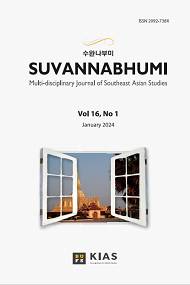부산외국어대학교 아세안연구원 주메뉴
전체메뉴

김인규 2010-12-20 00:00
워싱턴 스미소니언 프리어겔러리 소장 동남아시아도자기파편 안내정보
Ceramic Sherds from Southeast Asia—
The Freer Study Collection and its Donors
David P. Rehfuss
Introduction
The ceramic material related to Southeast Asia in the Freer Gallery of Art is divided among two collections. The Permanent Collection consists of the objects that can be displayed in the museum’s galleries, while the Study Collection contains potsherds, kiln wasters, and complete pieces of lesser quality. As the largest single component of the Study Collection, the ceramics associated with Southeast Asia include over 3300 potsherds from Burma (Myanmar), Cambodia, Malaysia, the Philippines, Thailand, and Vietnam, as well as from China and the Middle East, recovered in Southeast Asia from kilns sites, ancient entrepôts and harbors, graves, and consumer sites.
John Pope, director of the Freer Gallery from 1962 to 1971, made a concerted effort to assemble sherds, wasters, and kiln tools for use in study and technical analysis by the museum’s Department of Conservation and Scientific Research and by other scholars. Dr. Pope was one of some three dozen donors to the Study Collection. The bulk of the material was donated by interested amateurs, business executives, and U.S. Foreign Service employees who lived and collected in Asia.
One interesting discovery of this review of the Study Collection’s ceramics found in Southeast Asia is the relatively limited quantity of Chinese material (approximately 250 examples, about 7.5 percent.) This low percentage seems somewhat surprising. From at least the ninth century, Chinese ceramics were popular trade goods for Southeast Asian consumers, who used and collected these pots and often buried them to accompany the deceased on their next voyage. Chinese celadons and porcelains inspired and stimulated potters in the region.
Their limited numbers notwithstanding, donated Chinese ceramic fragments were found mixed with local wasters and potsherds at kiln sites and in fields and habitation sites throughout Southeast Asia. Victor Hauge (see below) picked up Chinese Ming dynasty porcelain potsherds that were intermingled with contemporaneous Northern Thai (Lan Na) sherds at various Lan Na kiln sites. John Pope found thirteenth-century Longquan celadon and qingbai fragments mixed with Khmer sherds at the royal palace site in Angkor Thom.
The maritime trade that crisscrossed Southeast Asia from the first millennium grew tremendously beginning in the twelfth century. Arab, Persian, Chinese, and Southeast Asian traders bartered ceramics, silk, and iron goods for spices and forest products. The demand
SEAsianCeramics.asia.si.edu 1 Copyright, Smithsonian Institution, 2008. Citations of this electronic publication should be made in the following manner: David P. Rehfuss, “Ceramic Sherds from Southeast Asia—The Freer Study Collection and its Donors,” Ceramics in Mainland Southeast Asia: Collections in the Freer Gallery of Art and Arthur M. Sackler Gallery, 2008, http://SEAsianCeramics.asia.si.edu
CERAMICS IN MAINLAND SOUTHEAST ASIA: COLLECTIONS IN THE FREER GALLERY OF ART AND ARTHUR M. SACKLER GALLERY was vast. The Southeast Asian trading ship that foundered off Hoi An, Central Vietnam, in the late fifteenth century carried some 750,000 Vietnamese ceramics bound for insular Southeast Asia. Almost all of the ceramic materials in the Study Collection acquired in the Philippines and Indonesia were originally trade goods. On the other hand, much of the Angkorian and Northern Thai material gathered by Victor Hauge was made for domestic consumption and was rarely found far from its place of production.
There is still much to be understood about historical ceramics in Southeast Asia and the traders who bartered them, but students and scholars of Asian art will be nearer to the answers because of the wealth of material here. This material has come to the Freer Gallery since the 1950s. This listing introduces those who collected it and what they donated.